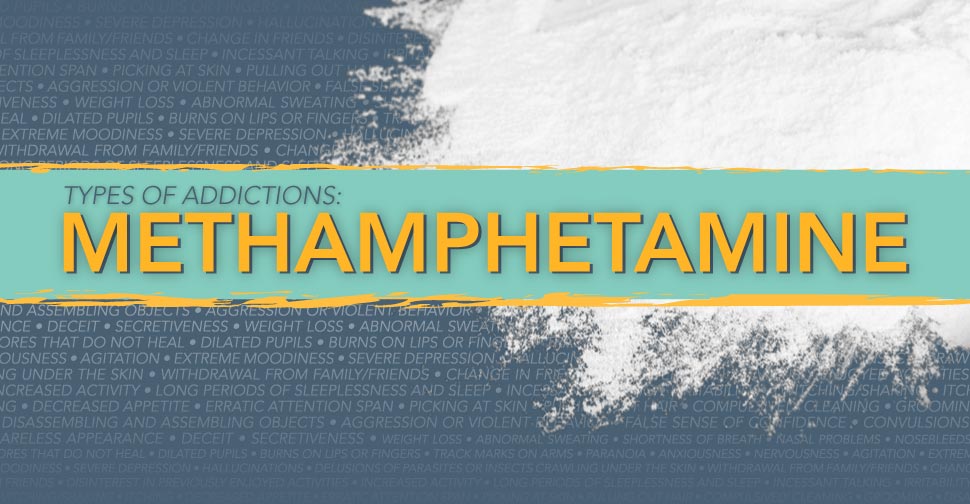Featured Experts
 Dr. Richard A. Rawson, Ph.D.
Dr. Richard A. Rawson, Ph.D.
 Dr. Richard A. Rawson, Ph.D.
Dr. Richard A. Rawson, Ph.D.
To Begin Your Journey On A Successful Recovery Program
I'd rather send an email
Methamphetamine — one of the world’s most toxic and addictive drugs — has triggered a public health crisis in many U.S. communities.
A potent central nervous system stimulant, meth creates an intense dependence that can ravage the user’s health and physical appearance. Others are also at risk, since meth addiction frequently breeds violent crime, identity theft, and child neglect and endangerment. Clandestine meth labs pose serious health hazards to the community, including a strong risk of explosion or fire. Toxic chemical waste from makeshift meth labs is often dumped into local rivers or top soil, threatening the groundwater supply.
Meth is a white crystalline powder that users typically snort, smoke or inject. Chronic meth use is associated with severe health dangers including brain damage, extreme weight loss, rampant tooth decay (“meth mouth”) and sometimes irreversible organ damage, strokes or death. Meth abuse can also induce psychotic or violent behaviors.
“Methamphetamine changes the brain in a number of ways,” says Dr. Richard Rawson, Co-Director of UCLA Integrated Substance Abuse Programs and Professor-in-Residence at the UCLA Department of Psychiatry. “Areas of the brain that control feelings of pleasure, memory, judgment, alertness, sleep/wake cycles and appetite are affected by methamphetamine use.”
While multiple neurotransmitters are impacted, meth’s primary focus is the brain’s reward/pleasure center, the dopamine system. Meth floods the body with dopamine, creating a short-lived euphoric rush. Users may become energetic and hypersexual, engaging in dangerous behaviors as they lose their inhibitions. They typically also go long periods without sleep (some users will be awake several days), and have little appetite. Anorexia and malnourishment is common with long-term meth use.
The chemical imbalance that meth creates leads to an intense crash when the drug’s effects wear off. Users may experience severe depression, paranoia and irritability, which feeds the cycle of addiction. Tolerance to meth occurs rapidly, with users requiring more of the drug to get high — as their physical and mental health deteriorates.
“Methamphetamine profoundly deregulates dopamine functioning when it produces its acute affects,” Rawson says. “And there are persistent changes that appear to last for weeks and months when people discontinue methamphetamine use.”
As an illegal recreational drug, methamphetamine is known by many street names — including crank, meth, speed, crystal, glass and ice. The U.S. Food and Drug Administration has approved limited medical use of methamphetamine hydrochloride for the treatment of narcolepsy, ADHD and a form of obesity. However, the drug is rarely prescribed due to its health risks and highly addictive potential.
Most of the illegal meth in the United States is produced in super labs in Mexico and here, operated by organized crime. The rest is made by amateur chemists in homegrown labs, using Internet recipes that may include the over-the-counter cold medicine ingredient, pseudoephedrine — along with battery acid, antifreeze and other toxic chemicals.
There are many signs that you or a loved one may be dependent on meth. These are among the changes in behavior and appearance that can occur, according to The Partnership for a Drug Free America:
Weight loss, abnormal sweating, shortness of breath, nasal problems or nosebleeds, sores that do not heal, dilated pupils, burns on lips or fingers, track marks on arms
Paranoia, anxiousness, nervousness, agitation, extreme moodiness, severe depression, hallucinations, delusions of parasites or insects crawling under the skin
Withdrawal from family/friends, change in friends, disinterest in previously enjoyed activities, increased activity, long periods of sleeplessness (24-120 hours), long periods of sleep (24-48 hours), incessant talking, irritability, twitching/shaking, itching, decreased appetite, erratic attention span, repetitious behavior such as picking at skin, pulling out hair, compulsively cleaning, grooming or disassembling and assembling objects, aggression or violent behavior, false sense of confidence/power, convulsions, carelessness about appearance, deceit or secretiveness
Rolled up paper money or short straws, pieces of glass/mirrors, razor blades, burned spoons, surgical tubing, syringes/needles
Treatment for meth addiction should address not only the physical dependency but also meth’s effects on the brain and body (i.e., malnutrition, dental disease, mood disturbances, HIV or hepatitis if contracted, etc.).
The search for medications to treat methamphetamine has been underway since the 1980s.
“It has been a very frustrating process,” says Rawson, the UCLA researcher. “Many medications have appeared to show promise, but when carefully tested in double-blind trials, they produce no more effect than placebo. There are intensive efforts to identify medications that may have value in treating methamphetamine users, but at present we don’t have one.”
Research on vaccines that would reduce cravings for meth show great promise, Rawson says; these are now in development.
“Until these efforts prove fruitful, a number of behavioral treatments have the best evidence of support,” Rawson says. These include psychosocial treatments such as Cognitive Behavioral Therapy, which helps people cope more effectively with cravings and break habits that lead to drug relapse.
Rawson says researchers are currently evaluating the benefits of physical exercise in assisting with recovery from meth dependence. Clinical trials are also being conducted on the effectiveness of an ADHD drug, lisdexamfetamine, to treat meth addiction.
If you or someone you care about is using meth, don’t delay getting help. The long-term effects of meth use are devastating, and addiction is a progressive disease. But it is treatable, and millions of Americans are in long-term recovery — enjoying healthy, drug-free lives. Treatment for meth addiction can literally save your life.
These resources can help you find the right care to start your recovery:
What Treatments Are Effective for People Who Abuse Methamphetamine?
Tips from Parents, Video Stories and Other Resources on Meth & Addiction:
Drugrehab.org provides FREE informative guides on addiction and recovery — such as our Guide to Choosing the Right Rehab, which outlines best practices for treatment. We also provide FREE referrals to respected rehabilitation centers nationwide – including the latest evidence-based treatment approaches and aftercare programs. All calls are confidential and help is available 24/7.
Drugrehab.org is an independent service, not funded by or affiliated with any treatment center. To find help for meth dependence, call our experienced counselors today at:
These websites include online forums, mutual aid organizations and 12-step programs for people with meth and other drug addictions:
http://www.facesandvoicesofrecovery.org/guide/support/
https://ncadd.org/recovery-support/mutual-aid-support
http://www.addictionsurvivors.org/
1-800-NCA-CALL (800-622-2255) 24-hour helpline sponsored by the National Council on Alcoholism and Drug Dependence.
1-800-662-HELP (4357) 24-hour National Drug and Alcohol Abuse Hotline offering information and referral services to people seeking treatment and other assistance; sponsored by the Center for Substance Abuse Treatment (CSAT)